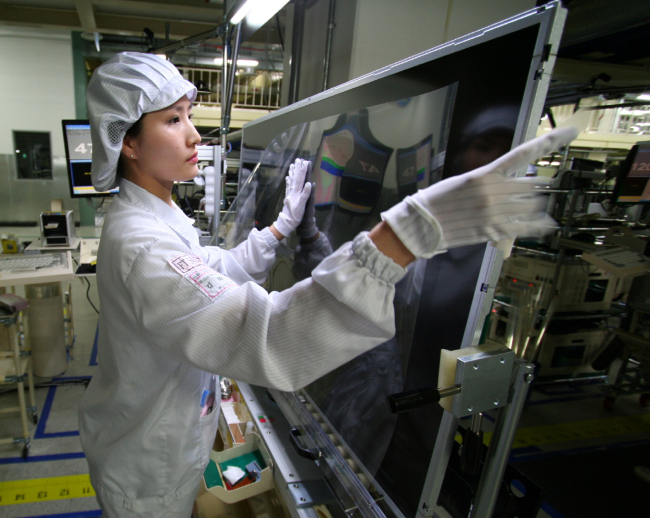[
THE INVESTOR] Tech giant
Samsung Electronics saw its market share in the global large-size display panel market decrease to a record low since 2014 in the first half this year, according to its regulatory filing released Aug. 16.
Citing a report from market research firm IHS, the tech firm said it had 16.7 percent market share in the six-month period, compared to the 21.1 percent and 20.9 percent of market share the firm posted in 2015 and 2014, respectively.
 |
A Samsung Electronics worker checks an LCD display. Samsung Electronics |
The market share drop is said to be mainly due to increased challenges posed by Chinese companies, which have recently ramped up the production of large-size liquid-crystal displays.
Chinese display companies are stepping up their efforts to take on their Korean counterparts Samsung Display, an affiliate of Samsung Electronics, and
LG Display in the LCD segment by building new manufacturing facilities for next-generation, or larger-size, LCD displays.
China Star, or CSOT, will reportedly invest 50 billion yuan (US$7.5 billion) to build a factory for the 11th-generation LCD.
A single 11th-gen LCD can be made into 15 46-inch (117 centimeters) TV displays.
Since October last year, BOE of China has been constructing a factory for the 10.5-generation LCD, with which 14 46-inch TV display can be produced.
The 8.5-generation LCD, which can be processed into 8 46-inch TV displays, is the largest size that Samsung and LG can currently produce.
In a bid to counteract the increasing clout of the Chinese firms, Samsung Electronics said it would put more focus on rolling out high-end products in an efficient manner.
“The company will try to improve profits and sales by reducing the manufacturing cost for large-size display panels while expanding the production of supersized and super high-definition displays and curved products,” the company said in the regulatory filing.
As to mobile displays, the firm said it would try to keep up with the demand for organic light-emitting diode displays, anticipated to increase down the road with the adoption of OLEDs for smartphones, including Apple’s iPhones.
(
wone0102@heraldcorp.com">
wone0102@heraldcorp.com)








![[Today’s K-pop] Blackpink’s Jennie, Lisa invited to Coachella as solo acts](http://res.heraldm.com/phpwas/restmb_idxmake.php?idx=644&simg=/content/image/2024/11/21/20241121050099_0.jpg)